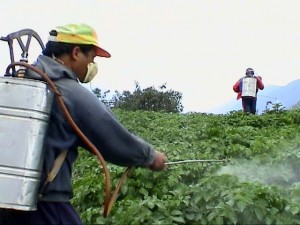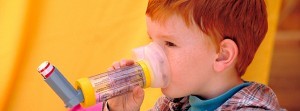

I. What is Environmental Toxicology?
III. An Overview of the Impact of Toxins on Children
IV. Pathways of Exposure for Children
V. The Details of Chemical Exposure
VI. Cost-Benefit Analysis and Discounting the Future
[su_button style=”flat” background=”#379c48″ size=”4″]Chapter 5 Resources[/su_button]
Questions for Discussion:
1. What is the correct balance to strike between careful regulation of potentially toxic industrial chemicals and economic innovation leading to high levels of employment?
2. What can you currently do to reduce your exposure to harmful human produced environmental toxins?
3. Can the precautionary principle be incorporated in U.S. environmental laws without shifting substantial resources from the private sector to the public sector, and if not should this be done?
4. Is there an alternative to “discounting the future” that would be a more Earth-friendly vision of evaluating investment opportunities, or is this type of economic analysis by its very nature divorced from environmental concerns?
5. What is the relationship between poverty and exposure to environmental toxins? Does this situation require an imperative for ethical action?
Active Learning Exercises:
1. Where are you from? Please go to the U. S. Environmental Protection Agency enviromapper storefront. Enter your home zip code, then using both the “Air, Water, Waste” and “Program Systems” boxes on the left, successively add all of the different polluting entities and examine the maps showing the distribution of each. Choose and print any map you choose from among these views of your home zip code. Notice that you can click on any specific location and follow that link to find out more about what the local situation might be. Write a one-page discussion of what you found out and how it relates to what you expected to find. Is your home town like you thought it was? In earlier versions of enviromapper there used to be a “social justice” function that allowed you to view the polluting sites in reference to areas with different levels of wealth, education, or the proportion of people of color. This function was discontinued. From what you know of your home zip code, would that have added any more pertinent information to the map?
2. With a group of others divide among yourselves and read recent reports on where different environmental toxins exist in the U. S. food supply. Some good reports to include are the national Workgroup for Safe Markets “No Silver Lining, an Investigation into Bisphenol A in Canned Goods,” the Environmental Working Group’s Shopper’s “Guide to Pesticides” and their “Overexposed, Organophosphate Pesticides in Children’s Food,” and the data base online at What’s On My Food?. Many other reports exist for which you might want to search. Once your reading is done, make a trip to a food store and accumulate two theoretical shopping carts, one filled with conventional products and the other with organic/BPA free foods purchased as locally as possible. Each theoretical cart should contain $75 worth of items bought using the guidelines. Make two tables showing the food items in each cart. Then compare the types and quantity of food bought with each type of diet in mind, and write a two-page reflection on the relationship between income level and a family’s capacity to adopt a chemical free diet. Include the two tables along with the reflection.
Recommended Readings:
Taking Action, Saving Lives, Our Duties to Protect Environmental and Public Health, by Kristin Shrader-Frechette (2007, Oxford University Press, Oxford)
Poisoned Profits, the Toxic Assault on Our Children, by Philip Shabecoff and Alice Shabecoff (2008, Random House Publishing Group, New York)
Silent Spring, by Rachel Carson (1962, Houghton-Mifflin, New York)
Our Stolen Future: Are We Threatening Our Fertility, Intelligence, and Survival? A scientific Detective Story. By Theo Colborn, Diane Dumanaski, and John Peter Meyers (1997, Plume published by the Penguin Group, New York)
